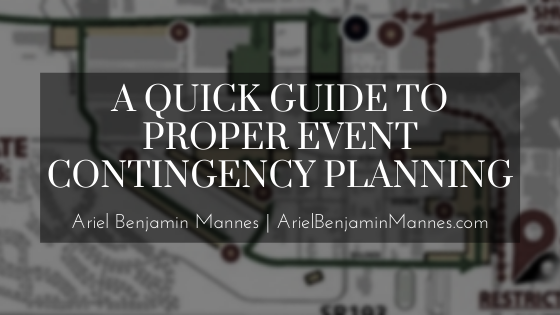From conferences to festivals to parades and major sporting events, large gatherings can be challenging to plan and manage. From the perspective of compliance, safety and security professionals; proper planning and handling is crucial to preventing potential catastrophes. Specifically, poor planning can quickly lead to safety hazards, logistical challenges, and other unnecessary hurdles that can derail an event for personnel, attendees and first responders alike.
As recent history has proven, event planning is far from impermeable to unexpected incidents; but a little foresight can go a long way to mitigate risk and promote a safe, fluid atmosphere; once this has been achieved, it will likely be easier to manage the event in the moment.
That said, here are a few quick tips for better contingency planning to help you measure best practices in your own organization(s):
Assume the worst
Many corporate executives would rather avoid the topics of security threats, natural disasters and safety deficiencies as they often evoke ugly and scary scenarios. While you should never promote a culture of cynicism or fear mongering, proper contingency planning should, at its core, identify and prepare for the worst case scenarios of the event in question. Leave no stone unturned in this regard; maybe your team foresees crowd flow being a potential hazard and inconvenience, or perhaps extreme cold or hot weather may increase the need for emergency staff. Regardless, structure your contingency checklists so they cover even stretch scenarios; it is better to have such plans and not need them than the inverse. If your organization values convenience or appearance over effective planning, consider the value of delays at effective security screening lines vs. the alternative of better throughput without effective security.
Consider the small details
Event-based contingency planning typically entails a long list of focal points, and it’s easy to tier these tasks in a manner that can leave smaller, yet still important details on the wayside. For example, as you plan to address major areas like attendee safety and budgetary stability, be sure to not lose sight of seemingly less dire details like lighting, aesthetic consistency, and predetermined transportation logistics. If overlooked, such areas can quickly become a larger issue and potentially harm your chances at involvement in future events (or for future events in general).
Promote transparency
Be as forthcoming and transparent as possible with event guests and contributors; this can start with matters as simple as proper invitation distribution and event marketing, and advance to other key practices like the clear relaying of information pertaining to locations, times, and vendors. Furthermore, keep guests informed of all safety procedures, event maps, and other resources that will educate them and eliminate confusion and panic in the moment if such plans become warranted.
Have a Professional Weigh In
Many organizations have event planners and safety/security professionals work in silos. Whether it’s an outside consultant or inside designee, have event plans reviewed by certified professionals who can help you identify vulnerabilities and address them accordingly. If budgetary constraints prevent you from bringing in consultants or hiring an internal safety/security manager; there are free federal resources available to equip you with training for event contingency planning.
